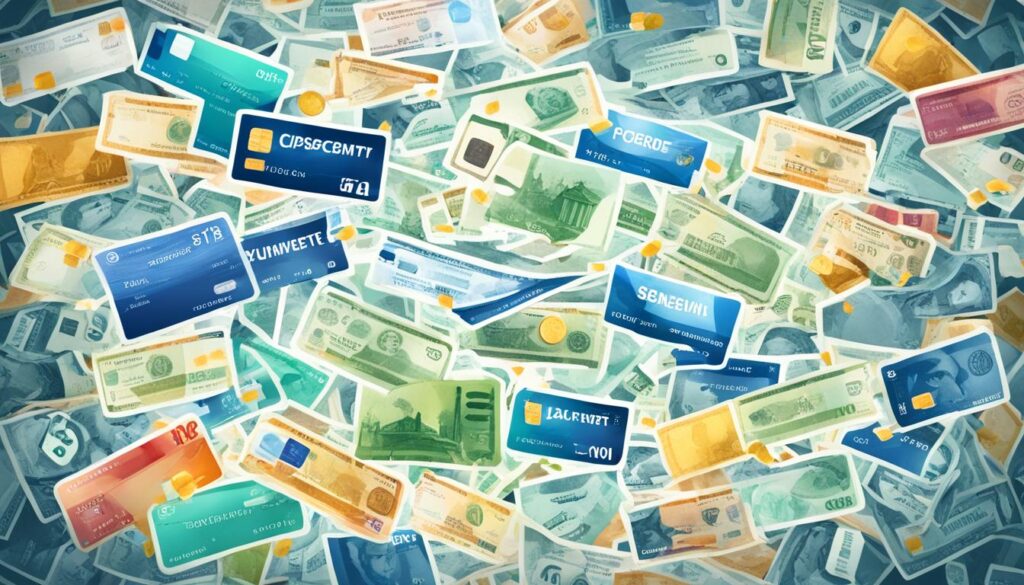Accidents happen, and sometimes we may mistakenly send a P2P payment to the wrong person. But fear not, there are ways to secure a refund and get your money back. While it may not always be a guarantee, taking the right steps can increase your chances of recovering the funds.
When using popular P2P payment apps like Venmo and Zelle, the refund process can vary. Typically, P2P payments are difficult to cancel or reverse as the money is transferred instantly into the recipient’s account. However, if you’ve entered incorrect account information, there may still be a chance to cancel the transaction. It’s crucial to contact the support teams of the payment apps for guidance on retrieving your money.
Key Takeaways:
- Accidents happen, and if you send a P2P payment to the wrong person, getting your money back can be challenging.
- P2P payments made through apps like Venmo and Zelle cannot be easily reversed once the recipient has accepted the payment.
- In cases of mistaken payments, it’s important to contact the support teams of the payment app to seek assistance in retrieving the funds.
- Refunds for mistaken P2P payments can be complicated by scams, so it’s vital to verify all transactions and be cautious of unexpected payments.
- To avoid sending money to the wrong person, double-check all recipient information before making a P2P payment.
Can Venmo or Zelle Be Reversed?
P2P payments made through Venmo and Zelle cannot be easily reversed once the money is sent and received. Once the recipient has received the funds, it becomes their property, and reversing the transaction becomes more challenging.
With Venmo, payments cannot be canceled once they reach the recipient’s account. However, there may be a chance to cancel the transaction if the payment is still pending due to invalid account information. In the unfortunate event that you unintentionally sent money to a stranger on Venmo, contacting Venmo support can help you reach out to the recipient and request the return of your funds.
Similarly, with Zelle, if the recipient is not enrolled in the service, you may be able to cancel the transaction. However, if the recipient has accepted the payment, it may not be recoverable, and you may need to contact your bank’s customer service to file a dispute.
While reversing P2P payments made through Venmo and Zelle may pose challenges, it’s important to note that each situation can vary. Contacting the support teams of these payment apps for guidance and assistance is crucial in navigating the refund process.
How Scams May Complicate Your Refund
Refunds for mistaken P2P payments can be further complicated by scams. Scammers often use stolen credit cards to send payments to strangers and then request the money to be sent back to them. In such cases, the credit card company may reverse the transaction and withdraw the funds from the recipient’s account if the transaction is reported as fraud.
Payment apps advise users not to interact with unexpected payments from unknown senders. However, if you unintentionally sent money to a stranger, it may be more challenging to engage with them and request the return of your funds. To mitigate these risks, it’s important to work through the support teams of the payment app and verify any unexpected payments before taking any action.
“Scammers often prey on unsuspecting individuals by manipulating their trust and exploiting their willingness to help others. It’s crucial to remain vigilant and cautious when dealing with unexpected transactions or requests for money.”
By partnering with the payment app’s support teams, you can seek guidance on next steps and protect yourself from potential scams. They have the expertise and resources to address refund complications due to scams and can help navigate the process of recovering your funds.
Protecting Yourself from Scams
While payment apps have safeguards in place, it’s essential to take proactive measures to protect yourself from scams:
- Exercise caution when receiving unexpected payments from unknown senders. If it seems suspicious, don’t engage with the transaction.
- Report any fraudulent activity to the payment app’s support team and your financial institution immediately.
- Regularly review your transaction history to identify any unauthorized activity and report it promptly.
- Stay informed about common scams and the latest fraud prevention techniques.
By staying vigilant and proactive, you can minimize the risk of falling victim to scams and protect yourself from refund complications associated with P2P payment scams.
| Scam Protection Tips | Description |
|---|---|
| Use secure payment platforms | Choose reputable payment apps that prioritize security measures to safeguard your transactions. |
| Enable two-factor authentication | Enhance the security of your P2P payment accounts by enabling two-factor authentication. |
| Keep your personal information private | Avoid sharing sensitive information, such as account details or payment credentials, with unknown individuals or entities. |
| Manage payment app notifications | Regularly review and respond to notifications from your payment app, ensuring that all transactions align with your expectations. |

By implementing these strategies and being alert to potential scams, you can protect yourself from refund complications due to scams and enjoy the convenience and benefits of P2P payments with greater peace of mind.
How Can You Avoid Sending the Wrong Person Money?
Preventing mistaken P2P payments and minimizing payment errors is essential to ensure a smooth and secure transaction process. Here are a few strategies to help you verify recipient information and mitigate the risk of sending money to the wrong person:
1. Transact with trusted individuals
One effective way to decrease the chances of making a mistaken P2P payment is to only transact with friends and people you know. By limiting your transactions to trusted individuals, you minimize the risk of falling victim to scammers or sending money to the wrong person.
2. Double-check all recipient information
Before sending a P2P payment, take a moment to double-check all recipient information, such as their email address, phone number, or unique handle. This extra step can help you verify the accuracy of the details and ensure that the payment goes to the intended recipient.
3. Send a test transaction
If you’re conducting a significant transaction or sending money to someone you’re not familiar with, consider sending a small token amount as a test transaction. This test allows you to verify that the recipient information is correct and ensures the proper routing of the payment before making larger transfers.
4. Explore alternative payment methods
In situations where you want more control over the payment process, consider using alternative payment methods such as ACH transfers or personal checks. These payment methods offer recourse for stopping or reversing transactions if needed, providing an added layer of security and peace of mind.
By following these steps and taking the time to verify recipient information, you can significantly reduce the risk of making mistaken P2P payments and ensure that your transactions are secure and accurate.
6 Ways to Cover Bills if Your Payment Is Lost
If you find yourself in a situation where your payment is lost due to a mistaken P2P transfer, there are several options to help you cover your bills. While having emergency savings is ideal, not everyone has that luxury. In such cases, here are six strategies you can consider:
- Utilize paycheck advance apps: Consider using paycheck advance apps like Chime, MoneyLion, or Dave. These apps provide short-term loans that can bridge the gap until your next payday, helping you cover your immediate financial needs during a temporary cash shortage.
- Explore short-term loans from banks and credit unions: Some banks and credit unions offer short-term loans with lower interest rates as an alternative to traditional payday loans. These loans can provide you with the necessary funds to cover your bills while you wait for the refund process to unfold.
- Use a credit card: If you have a credit card, you can use it to make necessary purchases or pay your bills. This can buy you some time until your refund is processed. However, it is crucial to create a plan for paying off the balance to avoid accruing interest.
- Reach out to your credit card company or lender: In case of a sudden hardship, you can contact your credit card company or lender to inquire about the possibility of skipping a payment. They may be able to provide you with a temporary reprieve to help you manage your cash flow until your refund is resolved.
- Discuss a one-time rent modification: If you have a good relationship with your landlord, consider discussing a one-time rent modification. Explain your situation and request a temporary adjustment to alleviate the financial strain caused by the lost payment. This can provide you with some breathing room while you wait for the refund.
- Borrow from friends or family: If you are comfortable doing so, consider reaching out to trusted friends or family members for temporary financial assistance. Borrowing a small amount can provide you with temporary relief and help cover your bills. However, make sure to exercise caution and repay the borrowed funds promptly and responsibly.
By utilizing these options, you can navigate the temporary cash shortage caused by a lost payment and ensure that your bills are covered while you wait for the refund process to unfold.

Conclusion
P2P payments offer a convenient way to transfer money, but they can also come with risks and potential mistakes. If you find yourself in a situation where you’ve sent money to the wrong person, securing a refund can be challenging. It’s important to exercise caution and verify all information before making P2P payments to minimize the chances of errors.
While some payment apps may have limited options for canceling or reversing transactions, the primary avenue for securing a refund is typically by relying on the recipient to return the funds. However, in cases involving scams, additional complexities may arise. To protect yourself, it’s crucial to verify transactions and to work closely with the support teams of the payment app to navigate the refund process.
To manage the financial impact of lost payments, having emergency savings can provide a buffer. If that’s not an option, exploring alternative solutions like short-term loans or seeking assistance from friends and family can help cover bills while you await the refund process. By maintaining good payment habits and staying vigilant, you can reduce the risks associated with mistaken P2P payments and increase the likelihood of recovering lost funds.
